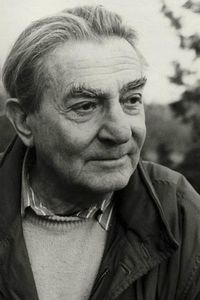Henri Alekan was a renowned French cinematographer born on February 10, 1909, in the vibrant city of Paris. He grew up in the charming neighborhood of Montmartre, where his early life would shape his future in the world of cinema.
At the tender age of sixteen, Alekan embarked on an unconventional journey with his brother, becoming traveling puppeteers. This experience instilled in him a sense of creativity and adaptability, skills that would serve him well in his future endeavors.
After his stint as a puppeteer, Alekan began his career in the film industry as a third assistant cameraman at the prestigious Billancourt Studios. He later served in the army, only to return to Billancourt in 1931, ready to resume his cinematic journey.
Alekan's early work in the 1930s was marked by his collaboration with renowned cinematographer Eugene Shufftan on films such as Marcel Carné's Quai des Brumes and Drôle de drame. Shufftan's non-naturalistic style greatly influenced Alekan, setting the stage for his own unique approach to cinematography.
Alekan's breakthrough as a director of photography came with René Clément's realistic war drama La Bataille du Rail in 1946. The same year, he worked on Jean Cocteau's enchanting fable La Belle et la Bête, showcasing his versatility and range.
However, Alekan found himself at odds with the emerging French New Wave cinema in the late 1950s. He instead turned to Hollywood, where he worked on more conventional films. Despite this, a new generation of directors appreciated his visionary style, leading him to collaborate with notable filmmakers such as Raúl Ruiz, Joseph Losey, and Wim Wenders.
Throughout his illustrious career, Alekan wrote one of the most acclaimed books about cinematography, Des lumières et des ombres, published in 1984 by Éditions du Collectionneur. The book is a testament to his passion and expertise in the field.
Henri Alekan passed away on June 15, 2001, at the age of 92, in Auxerre, Bourgogne, due to complications from leukemia. His legacy continues to inspire and influence cinematographers to this day.














